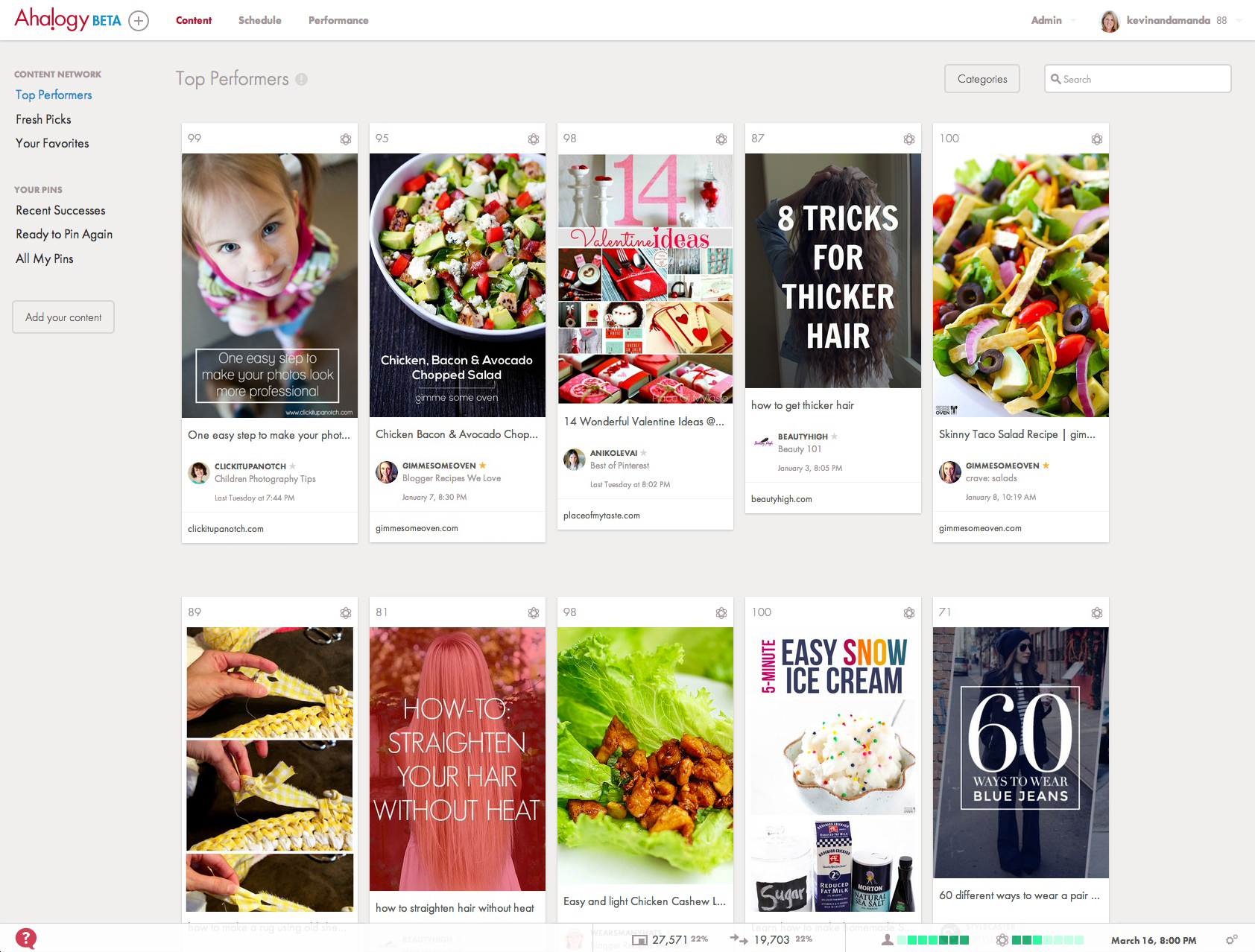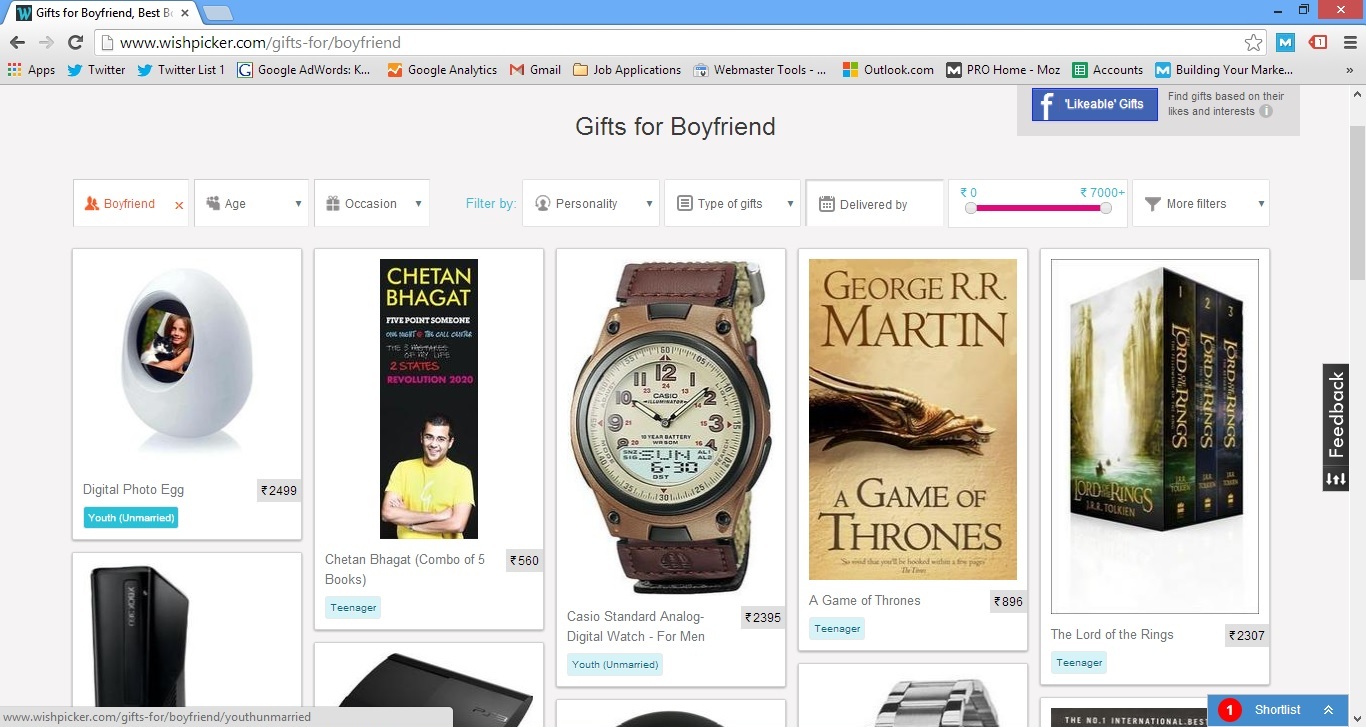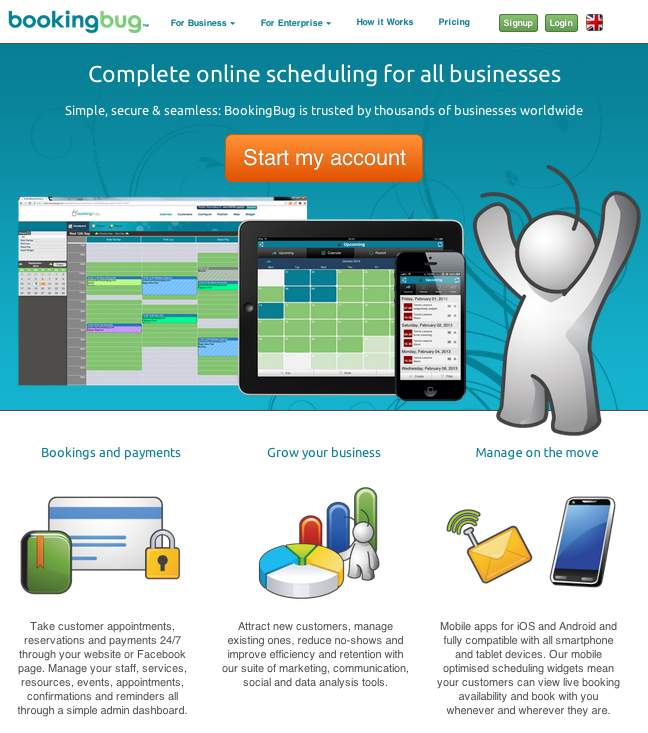 A Q&A with Ahalogy co-founder and president Bob Gilbreath. The Cincinnati, Ohio-based startup, which is a Pinterest-specific marketing platform, last week announced the completion of a $3 million Series A funding round. Investors include Hyde Park Venture Partners, Origin Ventures, CincyTech, North Coast Angel Fund and Vine Street Ventures. It was founded in 2012 by Gilbreath and Michael Wohlschlaeger, and has previously raised three rounds of Seed funding totaling more than $1.6 million.
A Q&A with Ahalogy co-founder and president Bob Gilbreath. The Cincinnati, Ohio-based startup, which is a Pinterest-specific marketing platform, last week announced the completion of a $3 million Series A funding round. Investors include Hyde Park Venture Partners, Origin Ventures, CincyTech, North Coast Angel Fund and Vine Street Ventures. It was founded in 2012 by Gilbreath and Michael Wohlschlaeger, and has previously raised three rounds of Seed funding totaling more than $1.6 million.
SUB: Please describe Ahalogy and your primary innovation.
Gilbreath: Ahalogy helps companies take advantage of Pinterest in order to maximize a consumer’s likelihood of viewing content, following a brand and converting to revenue. Our primary innovation is a combination of three things—the optimization of Pinterest technology, how we source content from thousands of content creators, and our pay-for-performance model.
SUB: Who are your target markets and users?
Gilbreath: Our target market is large brands that have a right-to-win in key categories that see the most engagement on Pinterest. These categories include food, fitness, fashion, beauty, décor, crafts and parenting.
SUB: Who do you consider to be your competition, and what differentiates Ahalogy from the competition?
Gilbreath: Our company grows when we help our brands scale engagement and results. We accomplish this through unique technology and data science, a pay-for-performance business model, and our proprietary Ahalogy Content Network—a content library of thousands of images and articles.
SUB: You just announced that you’ve raised $3 million in Series A funding. Why was this a particularly good time to raise more funding?
Gilbreath: It was a good time to raise more funding because 2014 will be a breakout year for Pinterest. We’ll see a strong increase in Pinterest users, an increase in use by marketers and thus a greater impact on business. Additionally, Pinterest is set to release Promoted Pins this year, which will provide brands even more opportunities to connect with consumers.
SUB: How do you plan to use the funds?
Gilbreath: We’ll be using the funds to help us refine our product, increase our staff and grow the size of our content network so that we can better serve marketers’ needs.
 SUB: What was the inspiration behind the idea for Ahalogy? Was there an ‘aha’ moment, or was the idea more gradual in developing?
SUB: What was the inspiration behind the idea for Ahalogy? Was there an ‘aha’ moment, or was the idea more gradual in developing?
Gilbreath: Ahalogy is an iteration of a previous company called StyleZen. At StyleZen we were experimenting with Pinterest to grow followers and traffic to the website when the team discovered the kind of hockey-stick growth that Pinterest can have when done right. This was our ‘aha’ moment and when we began to develop the technology that is now Ahalogy. Pinterest is a very marketer-friendly medium. When you use it correctly and pair it with the right technology, it can generate massive traffic.
SUB: What were the first steps you took in establishing the company?
Gilbreath: We launched in October, 2012, after pitching the idea to a group of two-dozen of the world’s biggest brands at an event hosted by the Cincinnati-based startup accelerator The Brandery. We received overwhelming feedback that these marketers loved our proposition. That’s when we knew we needed to take the idea further. We landed a client that day and began the company by building the platform and servicing the client by hand.
SUB: How did you come up with the name? What is the story or meaning behind it?
Gilbreath: Pinterest is about discovery. When you log in, you’re hoping to discover something new. We bring the science, the data, the analytics and the quality content to deliver that. The magic of what we do is the ‘aha’ moment when a user discovers something new on Pinterest because of the science we’ve put behind a campaign strategy.
SUB: Do you have plans to seek additional outside funding in the near future?
Gilbreath: Not at the moment. We’ll see how things go in the year ahead.
SUB: What have the most significant challenges been so far to building the company?
Gilbreath: One of the things that we learned early on is that you need to have a significant amount of high-quality content to win on Pinterest. Major brands are lacking in either quality or quantity of content to pin. We recognized that if we didn’t solve this problem for the brands, we wouldn’t have a company.
We turned to some of the content creators we had already been working with and told them they could have free access to our Pinterest optimization technology if we could license their content to use for our clients. This turned into what we now refer to as our Ahalogy Content Network, which has since grown to more than 1,000 unique creators. Now, we’re also helping brands use this content on other outlets like Instagram and Twitter.
SUB: How do you generate revenue or plan to generate revenue?
Gilbreath: Brands pay us for our results. Typically we work with a brand to set a key performance indicator—for example, to increase visitors to a website from Pinterest—and then we agree on a cost-per-visitor price. Most other companies charge a monthly fee that is disconnected from results. Our pay-for-performance model ensures that we are in business together with the brand. We only grow when they grow. This focuses our innovation on what actually performs, instead of things like vanity metrics and contests.
SUB: What are your goals for Ahalogy over the next year or so?
Gilbreath: Our overarching goal as a company this year is to continue to help more companies discover the marketing power of Pinterest. We’ll do this by deepening our impact through new Pinterest tools like Promoted Pins, recipe search and interests.












